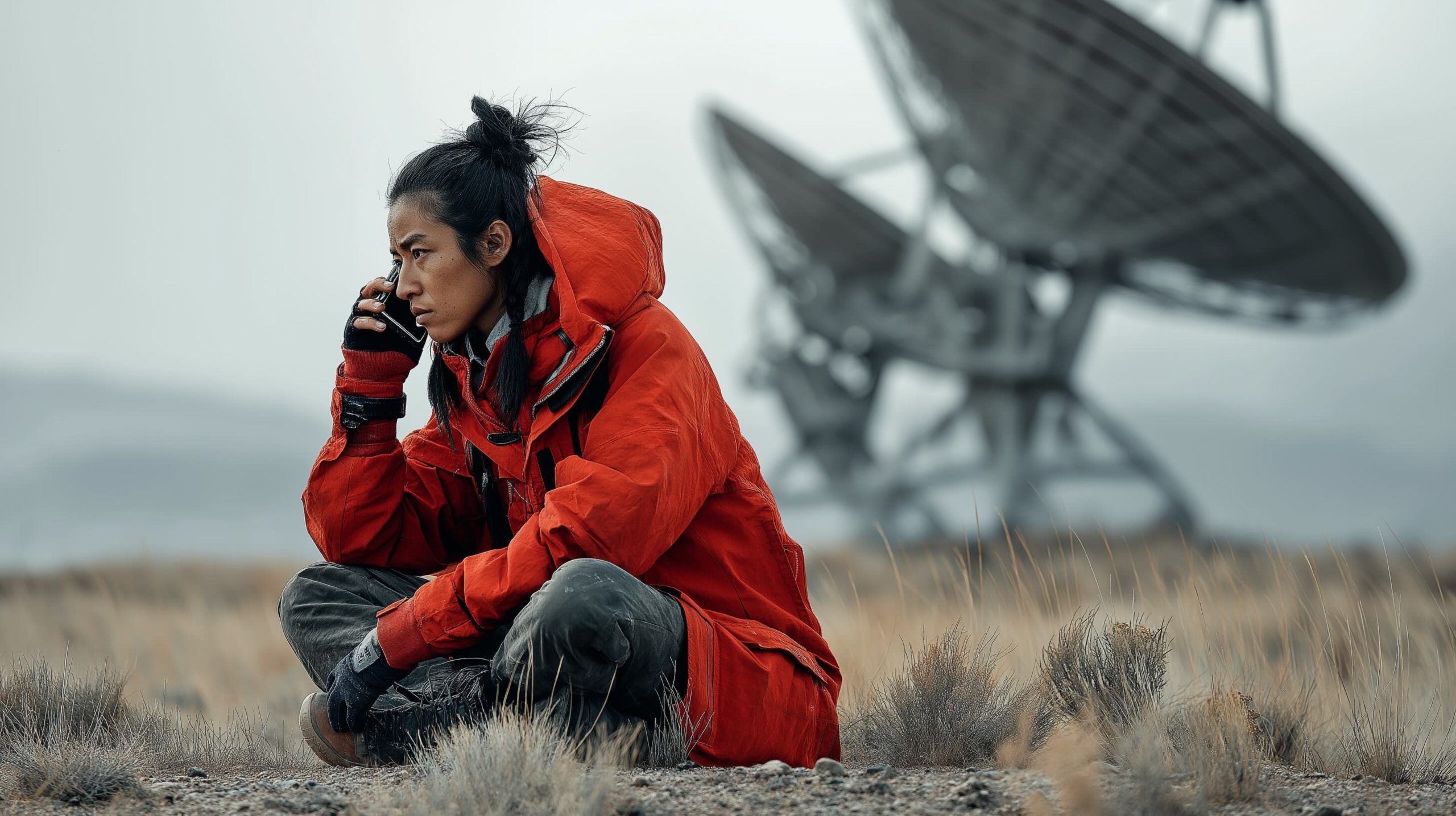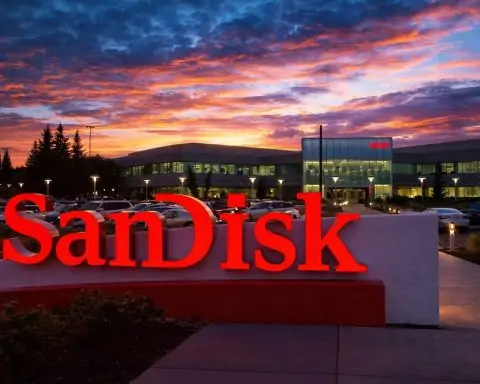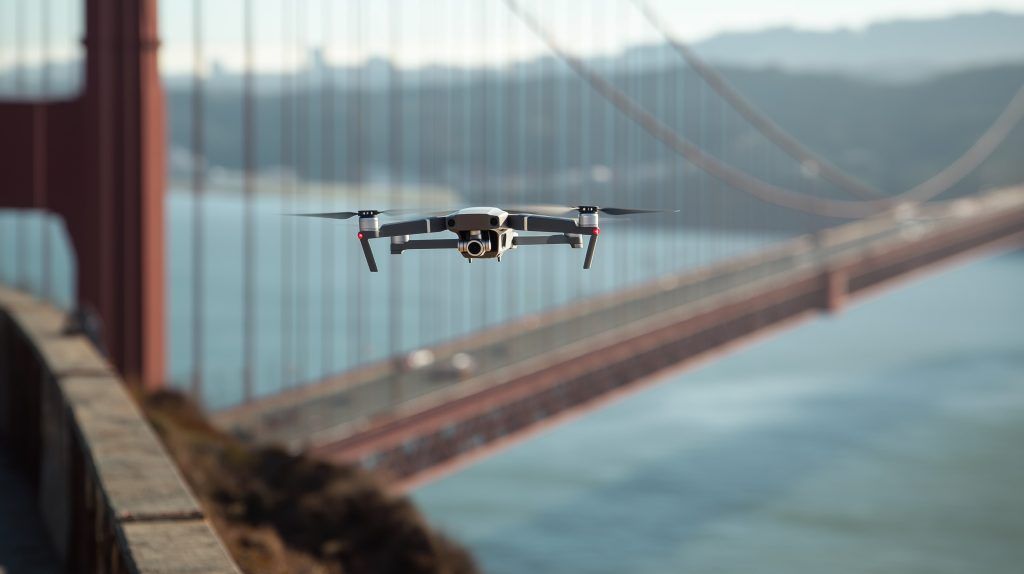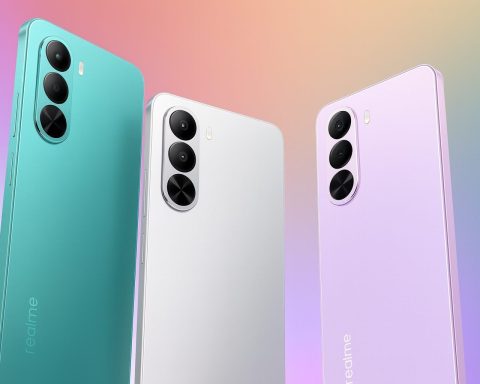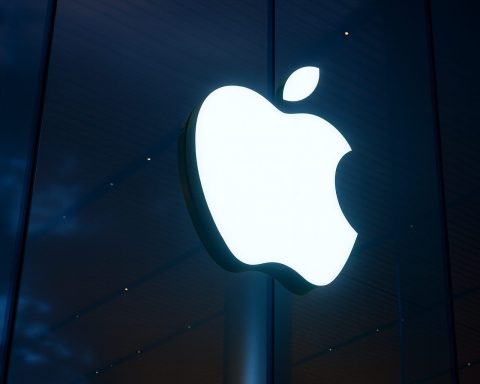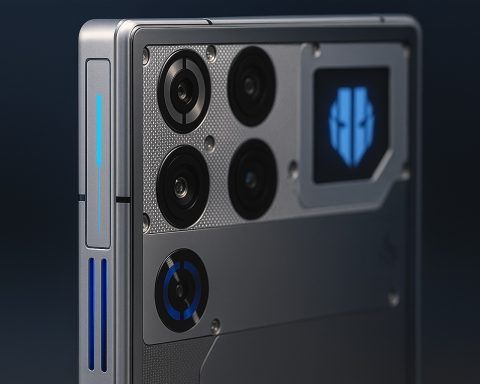- Apple launched Emergency SOS via satellite on the iPhone 14 series in late 2022 using Globalstar’s LEO network.
- Samsung Galaxy S25, launched in 2025, is the first commercially available phone to include Snapdragon Satellite for two-way messaging via Iridium’s LEO constellation, with Android 15 native support.
- Bullitt Group’s Bullitt Satellite Messenger rolled out in Q1 2023, enabling two-way SMS on the Motorola Defy 2 and CAT S75 via Skylo GEO satellites.
- Huawei Mate 60 Pro (2023) added two-way satellite texting and satellite voice calling via BeiDou’s Tiantong GEO network, requiring careful skyward pointing and delivering low bandwidth.
- By the end of 2023, built-in satellite messaging reached about 92 million phones, up from 2 million two years earlier.
- AST SpaceMobile’s BlueWalker 3 test in 2023 achieved the first direct voice call from a standard smartphone to a satellite and demonstrated a 5G data connection, with a plan for a 168-satellite constellation.
- SpaceX Starlink Direct to Cell began with the January 2024 launch of Direct-to-Cell satellites; by mid-2025 there were over 650 in orbit, with texting rolling out in 2024–25 and voice/broadband planned for 2025–26; T-Mobile’s T-Satellite launched in July 2025, offering free 911 texting for recent smartphones and a $10/month option for others, and beta in early 2025 saw 1.8 million users sending over 1 million messages.
- Verizon launched satellite texting in 2025 via Skylo geostationary satellites; Pixel 9 and Galaxy S25 support the service as of early 2025, while iPhones are not yet supported due to hardware.
- Industry forecasts project direct-to-phone satellite services reaching 4.8 billion people and $18 billion in revenue by 2027, with partnerships linking Apple, Qualcomm, Verizon, AT&T, and SpaceX competing to dominate the space.
- Experts agree smartphone-satellite convergence is real, with Iridium’s Matt Desch predicting expanded coverage and new features, CCS Insight’s Luke Pearce calling it a telecom milestone, and the overall view that dedicated satellite phones will remain for professional use while consumer access shifts to smartphones.
Introduction: A New Era of Off-Grid Connectivity
Staying connected “anywhere under the sky” is no longer just the promise of bulky satellite phones carried by explorers and mariners. Today, mainstream smartphones are gaining satellite links, letting users send SOS texts from remote mountains or even make calls from the middle of the ocean. This report dives deep into the battle between traditional satellite phones and the new wave of satellite-connected smartphones, exploring current capabilities, upcoming models, and what industry experts predict for the future of off-grid communication.
Satellite Phones vs. Satellite-Enabled Smartphones: What’s the Difference?
Dedicated satellite phones are standalone handsets (e.g. by Iridium, Thuraya, Inmarsat) designed to communicate directly with satellites for voice calls and messaging. They often have large antennae and specialized hardware to maintain a link outside cellular coverage. In contrast, satellite-enabled smartphones are ordinary mobile phones (like iPhones or Android devices) that include satellite connectivity features – typically limited to emergency texting for now – integrated via special antennas and chipsets.
Key distinctions include:
- Hardware and Antennas: Traditional sat phones have protruding antennas for GEO (geosynchronous) or LEO (low-Earth orbit) satellite networks, making them bulky. Smartphones manage with internal antennas, trading some signal strength for convenience [1] [2]. For example, Huawei’s Mate 60 Pro includes an internal satellite antenna, but users must still carefully point the phone skyward to stay connected [3].
- Services and Bandwidth: Classic satellite phones offer voice calling, SMS, and very low-bandwidth data globally, but with noticeable latency (especially on GEO networks ~36,000 km away) [4]. Smartphone satellite features today are mostly limited to basic messaging and SOS, not real phone calls or web browsing (with notable exceptions discussed below). Apple’s iPhone 14/15, for instance, can text emergency services via satellite but “can’t make or receive phone calls” over satellite [5]. Satellite smartphones currently prioritize lifesaving connectivity in dead zones rather than full-fledged voice service.
- Use Cases: Dedicated sat phones have long served niche markets – explorers in deserts, sailors at sea, disaster responders – essentially anyone beyond cell tower range. Smartphones with satellite aim to “bring connectivity to remote locations” for ordinary consumers [6]. Imagine a hiker using their regular phone to summon help from a mountain with no cell signal – a scenario that is now becoming reality. In short, satellite phones were the lifeline of last resort; satellite-connected smartphones want to make that lifeline accessible to every user without a special device.
Satellite Connectivity Comes to Your Smartphone (2022–2025)
Not long ago, satellite messaging on a normal phone seemed futuristic. Now it’s here. Apple kicked off the trend in late 2022 with Emergency SOS via satellite on the iPhone 14 series, partnering with Globalstar’s LEO satellites. By pointing an iPhone toward a passing satellite (guided by on-screen directions), users can send a formatted distress text to emergency services when out of cellular range. This service expanded internationally through 2023–2024 and even added roadside assistance texting in some regions. However, it remains limited to emergencies – you can’t casually text friends via Apple’s satellite link, and no voice calls are supported [7]. Apple’s choice of Globalstar’s low-Earth satellites means the iPhone must align with fast-moving satellites and ground stations, which works for short SOS messages but isn’t yet a general satellite phone replacement [8].
Android makers have quickly followed. Qualcomm announced Snapdragon Satellite at CES 2023 as a two-way messaging solution for premium Android phones using the Iridium satellite network [9] [10]. After some delays, this feature is now becoming reality: Samsung’s new Galaxy S25 series (launched 2025) are “the first commercially available devices to feature Snapdragon Satellite,” enabling direct messaging via Iridium’s LEO constellation [11]. The capability is built into Qualcomm’s latest chips and Android OS (native support arrived with Android 15), requiring only the proper hardware and regulatory clearance [12]. Samsung didn’t heavily promote the S25’s satellite feature at launch – likely because partnerships with satellite operators and government approvals are still ongoing [13] [14] – but the hardware is there. This means S25 users will eventually be able to send/receive texts outside of cellular coverage, a lifesaver in emergencies [15].
Qualcomm’s system isn’t the only game in town for Android. In early 2023, British manufacturer Bullitt Group (maker of rugged CAT and Motorola Defy phones) rolled out Bullitt Satellite Messenger, a service using GEO satellites to send SMS to any phone. Devices like the Motorola Defy 2 and CAT S75 include special NTN (non-terrestrial network) hardware and connect to the Skylo satellite network, allowing users to “send messages to any smartphone, anywhere you have a clear view of the sky,” via the Bullitt satellite messaging app [16]. This two-way service, launched in Q1 2023, targets adventurers and remote workers who want basic messaging and SOS functions on a familiar smartphone interface [17] [18].
Huawei took a slightly different path, leveraging China’s unique satellite infrastructure. The 2022 Huawei Mate 50 Pro was the world’s first phone with built-in satellite SMS, using China’s BeiDou navigation satellites to send (one-way) texts when no ground signal was available [19]. By 2023, Huawei upped the ante: the Mate 60 Pro introduced two-way texting and even voice calling via satellite, making it “the world’s first satellite calling phone.” This device connects to China Telecom’s Tiantong GEO satellites – three geostationary satellites covering China, parts of Asia, and Africa [20]. In effect, Mate 60 Pro users on China Telecom’s network can make a satellite phone call from a regular-looking smartphone [21] [22]. The tradeoff is that talking via a GEO satellite 22,000 miles away requires careful pointing and likely an earbud (to avoid holding a high-powered transmitter to your head) [23] [24]. It’s also low-bandwidth and intended for emergency use, but as one analyst noted, “it’s obviously very low bandwidth. But it’s a step up from what we’ve seen with the iPhone.” [25] In other words, Huawei demonstrated that full satellite voice on a smartphone is possible, albeit with current limitations.
Beyond these, other brands are joining in. Apple’s success has spurred a “must-have” mindset around satellite messaging [26]. Qualcomm has confirmed partnerships with major Chinese OEMs like Xiaomi, Oppo, and vivo to bring Snapdragon Satellite to their devices [27]. Google’s Pixel 9 (late 2024) reportedly includes satellite SMS support on Verizon (via Skylo) for Android users [28] [29]. In fact, as of early 2025 Verizon’s new satellite text service works on Pixel 9 and Samsung’s Galaxy S25, though notably not on iPhones (since Verizon’s system requires hardware Apple hasn’t adopted yet) [30] [31]. In China’s domestic market, other phone makers are likely to follow Huawei’s lead with satellite features, especially as Beidou’s short-message service is a unique selling point.
All told, the period from 2022 to 2025 has seen satellite connectivity graduate from niche devices to mainstream smartphones. According to market analysts, about 92 million phones had built-in satellite messaging by the end of 2023, a meteoric rise from just 2 million two years prior [32] [33]. The trend “led by Apple” shows no sign of slowing [34], as more manufacturers and carriers race to eliminate dead zones.
Upcoming Models and Evolving Capabilities
The next couple of years will bring an even broader lineup of satellite-enabled phones and expanded functions:
- Apple’s Next iPhones: Apple is expected to continue offering Emergency SOS via satellite on all new iPhones (iPhone 16 in 2024, iPhone 17 in 2025, etc.), potentially improving the service or adding non-emergency messaging in the future. Apple has already integrated satellite support for partner networks – e.g. iOS 18.3 enabled iPhones on T-Mobile to use SpaceX Starlink satellites for messaging [35]. While Apple hasn’t signaled plans for voice calls via satellite, its close ties with Globalstar (and investment in that network) suggest it will keep enhancing satellite capabilities for iPhone users.
- Samsung and Android Flagships: With the Galaxy S25 series breaking the ice in 2025, it’s likely that satellite messaging will become a standard feature on high-end Android devices. Samsung worked with Qualcomm on a custom Snapdragon 8 “Elite” chip that enabled the S25’s satellite SMS [36] [37]. Future Galaxy models (and other brands’ flagships) are expected to include the necessary NTN hardware by default, especially now that Android officially supports it. Google’s Pixel phones, Xiaomi’s flagships, and others are rumored to join the fray as soon as regulators approve the services in their target markets [38].
- Rugged and Specialized Phones: Niche players will continue to offer enhanced satellite options. For instance, Bullitt’s next-gen devices may expand beyond texting – the company has hinted at offering limited voice or richer messaging through satellites as technology improves. Other rugged phone makers (e.g. Garmin with its InReach devices, though those are standalone) might integrate more tightly with smartphones or wearables for satellite comms.
- Two-Way and Better Bandwidth: One clear trend is moving from one-way SOS to two-way communication. Huawei’s Mate 60 Pro achieved two-way SMS (and limited voice) via GEO satellites [39] [40]. Qualcomm’s Iridium-based service was two-way from the start. We can expect upcoming models to universally offer two-way texting, so users can not only send distress messages but also receive confirmations or coordinate rescue, vastly improving survival scenarios. “Effectively realizing two-way communication between the caller and the rescuer,” as seen with Huawei’s latest implementation, is a game-changer [41] [42]. In time, higher bandwidth may allow images or richer data to be sent, albeit slowly.
- Standardization and Apps: By 2024–2025, satellite messaging is shifting from proprietary solutions to industry standards. Android’s adoption means any app or OEM can hook into satellite APIs. For example, Qualcomm and Iridium’s terminated exclusive agreement (as of end 2023) actually opened the door for Iridium to work directly with other phone makers and platform vendors [43] [44]. This could lead to broader support – imagine WhatsApp or Telegram enabling a “satellite mode” to send a text when your phone has no signal. In fact, T-Mobile hinted that its satellite messaging will support third-party chat apps (like WhatsApp or X/Twitter) by late 2024 [45]. The ecosystem of apps and services leveraging direct satellite links on phones is set to grow.
In short, expect many 2024–2025 smartphones – especially premium and rugged models – to tout satellite connectivity on the spec sheet, with continually improving service from basic SOS toward more everyday uses. As this happens, the gap between what a “sat phone” can do and what your normal phone can do in remote areas will narrow dramatically.
The Future of Dedicated Satellite Phones: Do They Have a Place?
With your iPhone or Galaxy soon able to message (and eventually call) from anywhere, one might think the classic brick-like satellite phone is headed for extinction. Indeed, carriers like T-Mobile explicitly market their satellite-cell service as eliminating the need to “lug around expensive satellite phones” for coverage in remote spots [46]. If every tourist on a remote hiking trail can call for help via their everyday phone, the casual consumer market for standalone sat phones could dwindle.
However, dedicated satellite phones won’t disappear overnight. Here’s why they will likely co-exist and evolve:
- Voice and Reliability: Today’s smartphone-satellite links are mostly text-based and have strict limitations (short messages, specific use cases, or slow speeds). Dedicated sat phones still offer real-time voice calling and reliable connectivity that professionals trust. For a bush pilot, an offshore oil worker, or a ship captain, a rugged Iridium handset with guaranteed coverage and a week-long battery life is a lifeline that a slim smartphone (prone to battery drain and fragile hardware) can’t yet fully replace. When it comes to critical voice communication in extreme conditions, sat phones remain the gold standard. That said, as satellite networks improve, smartphone voice service will encroach on this domain (we’re already seeing early examples like Huawei’s satellite calls).
- Global Coverage and Networks: Satellite phones from Iridium or Inmarsat offer truly global coverage today – pole to pole – whereas some new smartphone-focused services will start regionally. For example, Apple’s SOS via Globalstar covers North America, Europe, and select areas, but not the entire globe yet. SpaceX’s direct-to-cell will initially cover the U.S. and parts of other countries through carrier partners before scaling up. Meanwhile, an Inmarsat or Iridium sat phone just works anywhere on Earth with open sky. In remote polar expeditions or deep jungle, professionals won’t gamble on a nascent service – they’ll carry a device known to work on existing satellite networks.
- Ruggedness and Power: Many satellite phones are built to be extremely rugged – surviving heavy rain, dust, and drops – which is crucial in disaster zones or expeditions. Smartphones, even in tough cases, aren’t as hardy. Additionally, satellite operation is power-intensive. A smartphone might drain its battery quickly when used as a sat communicator, whereas a dedicated sat phone is optimized for that and often has replaceable batteries. Until smartphone battery tech improves, heavy satellite users (e.g. multi-day rescue operations) will prefer a specialized tool.
- Professional and Government Use: The market for military, maritime, aviation and emergency responders will sustain demand for sat phones and satellite hotspots. Governments and NGOs often stockpile sat phones for emergencies. These users also need secure, encrypted channels or the ability to connect external antennas (e.g. for vehicles), features more available on pro gear than on consumer smartphones.
That said, the role of the dedicated satellite phone will likely shrink in the consumer segment. Industry experts acknowledge the trend: “The direction of the industry is clear toward increased satellite connectivity in consumer devices,” notes Iridium CEO Matt Desch, whose company powers many sat phones but also partners in smartphone ventures [47]. As satellite messaging “becomes an integral part of everyday smartphones” [48], average adventurers may never need to rent or buy a separate sat phone for their road trip or backpacking tour – their phone’s got it covered. Classic sat phone manufacturers are adapting by teaming with smartphone players (for example, Globalstar with Apple, Iridium with Qualcomm, Thuraya offering sat sleeve adapters, etc.) [49] [50]. Over time, we may see hybrid devices or satellite hotspots (battery-powered relays that connect your phone to satellites) bridging the gap, rather than everyone carrying two phones.
In summary, dedicated satellite handsets will remain vital for specialists and in scenarios where maximum reliability is paramount. But for the general public, their “lifeline to the outside world” in no-signal areas is shifting to the smartphone in their pocket – a transition that marks a major turning point in off-grid connectivity.
Satellite Voice and Data: From Emergency Texts to Everyday Use
One of the biggest questions is when (and how) smartphones will handle not just SOS texts, but voice calls and internet data via satellite – the core functions of a traditional satellite phone. Technologically, it’s already starting: Huawei’s Mate 60 Pro proved a normal-sized phone can connect a voice call through a GEO sat network [51] [52]. In the LEO arena, Texas-based startup AST SpaceMobile made headlines in 2023 by placing the first-ever direct voice call from a standard smartphone to a satellite, using their BlueWalker 3 test satellite and AT&T’s spectrum [53]. AST also achieved a 5G data connection in tests [54], and plans to deploy a constellation (168 satellites proposed) for global coverage in the coming years [55]. This hints at a future where your phone could roam onto a satellite network for calls or even low-speed data when no cell towers are around.
SpaceX’s Starlink Direct to Cell initiative aims to do the same on a potentially larger scale. In partnership with T-Mobile and other carriers, SpaceX is launching second-generation Starlink satellites equipped with cellular antennas (band 5 / 2GHz) that can link directly to ordinary phones. The first of these Direct-to-Cell satellites went up in January 2024 [56], and by mid-2025 SpaceX had over 650 of them in orbit preparing for service [57]. The rollout plan is text messaging in 2024-25, followed by voice calls and eventually modest broadband data by 2025-26, once enough satellites are active [58] [59]. In fact, T-Mobile announced it will officially launch its satellite texting service (branded “T-Satellite”) across the U.S. in July 2025, with 911 emergency texting free for anyone with a recent smartphone, and a paid option ($10/month for non-T-Mobile customers) for messaging in dead zones [60] [61]. The service had been in beta in early 2025, during which 1.8 million users sent over a million satellite messages using their regular phones [62] [63] – clear evidence of demand for off-grid connectivity. By October 2025, T-Mobile expects to add limited satellite data services (like messaging apps and even Whatsapp connectivity) as a next step [64] [65].
The implications are huge: satellite voice on smartphones could genuinely challenge the satellite phone device market. If a camper in the wilderness can call their family using their normal phone via Starlink or AST’s satellites, the use case for a separate Iridium phone diminishes. Industry analysts foresee direct-to-phone satellite services becoming a billion-dollar market by 2027, reaching billions of people and generating new revenue for operators [66] [67]. It’s telling that Verizon and AT&T – who have long sold satellite phones as a niche offering – are now partnering with satellite startups (Verizon with AST, AT&T with AST as well) to integrate satellite coverage into their mainstream service plans [68] [69]. Verizon even launched a free satellite texting feature for Android users in 2025 using Skylo’s network, with the promise that once AST’s satellites are ready, text, voice, and even video calls will be supported for all customers, iPhone and Android alike [70] [71]. In other words, the major cellular carriers envision a future where satellite is just another cell “tower” in the sky, handed off seamlessly when you leave terrestrial coverage.
There are challenges to this rosy vision: bandwidth will be very limited at first (forget streaming videos – satellite links will be slow and prioritized for low-data uses initially), and coverage won’t be truly ubiquitous until constellations mature. Additionally, regulatory approvals are non-trivial – operating essentially spaceborne cell sites requires spectrum rights and coordination. SpaceX has faced some objections (e.g. concerning use of certain bands) [72], and AST needs to launch enough satellites for continuous coverage. Nonetheless, the trajectory is set. As one satellite industry consultant put it, “direct-to-device satellite connectivity [is] emerging as a revolutionary development”, turning what used to require specialized gear into an add-on for regular smartphones [73].
For consumers, this means that within a couple of years, making an emergency voice call from an unmodified phone on a remote mountaintop could be as straightforward as the SOS texting is today. And a few years further out, we could see basic internet access (sending an email or checking a map) directly via satellite on standard phones – slow, but potentially life-saving for those off-grid moments. The digital divide stands to shrink for the 493 million people globally who still lack any cellular coverage [74] [75]. As satellites and cell networks fuse, satellite phones in their traditional form factor may become a rarity outside of specialist circles.
SpaceX, Starlink & New Satellite Networks: Impact on the Satellite Phone Market
No discussion of this topic is complete without focusing on SpaceX’s Starlink and similar “cell tower in the sky” networks, because they represent both the biggest opportunity and the biggest disruptive threat to the satellite communications status quo.
Starlink’s existing service (using pizza-box-sized dish terminals) proved that low Earth orbit can deliver broadband to remote areas. Now the Starlink “Direct to Cell” service is poised to deliver connectivity straight to phones. According to SpaceX, the upgraded satellites will enable “ubiquitous access to texting, calling, and browsing wherever you may be…with the phone you already have” [76] [77]. The vision is explicitly to “make dead zones a thing of the past” [78], rendering the notion of a separate satellite phone unnecessary for most consumers. T-Mobile’s CEO framed it as providing peace of mind in remote locations without needing special equipment [79]. Early stages will focus on texting (which requires minimal bandwidth), but as more satellites go up, voice calls are the next target. SpaceX has mentioned 2025–26 for voice and “broadband” (likely low-speed data like 2G/3G equivalent) to roll out [80].
The impact on the satellite phone industry could be profound:
- Market Competition: Traditional satellite operators like Iridium, Globalstar, and Thuraya face a massive new competitor in SpaceX (and similarly AST SpaceMobile, Lynk, etc.). These newcomers leverage economies of scale (hundreds of satellites serving millions of phones) and partnerships with telcos, potentially undercutting the old model of expensive per-minute satellite calls. Already, T-Mobile plans to include basic satellite messaging for free on some plans and at low cost for others [81], a stark contrast to the high fees of legacy sat phone airtime. If voice follows the same model (bundled or cheap add-on), dedicated sat phone providers may be forced to lower prices or specialize further to maintain their user base.
- Network Symbiosis vs. Cannibalization: Interestingly, companies like Iridium are also partners to the smartphone revolution – Iridium powers Qualcomm’s Snapdragon Satellite and Garmin’s inReach devices, and it promotes itself as “well suited to be a key player in this emerging market” of direct-to-phone services [82]. There may be room for both existing networks and new ones: for example, Globalstar is effectively becoming an infrastructure provider for Apple’s services, while still selling its own sat phones. Inmarsat (now part of Viasat) might focus on aviation/maritime and IoT devices, letting consumer handheld use shift to hybrid networks. The satellite phone market, worth around $1 billion annually in 2024 [83], could pivot to serving more commercial and IoT needs while consumer demand shifts to carrier-integrated solutions.
- Coverage and Redundancy: One risk to putting all eggs in the new-LEO basket is coverage gaps early on. For instance, AST and Lynk will take years to cover the globe 24/7, and even Starlink’s ambitious schedule might see patchy service in some areas at first. During that interim, traditional sat phones (on GEO and existing LEO networks) provide a coverage safety net. In fact, some experts suggest carrying a backup sat device in truly remote expeditions until direct-to-cell constellations are fully mature. Over time, however, as SpaceX and others blanket the earth, this redundancy may become moot for most locales.
- Technology Integration: Starlink’s approach uses standard cellular bands, meaning any 4G/5G phone could connect (T-Mobile noted that “most smartphones made in the last four years” are compatible with their satellite service with just a software update [84] [85]). This is a critical difference: Apple’s and Qualcomm’s solutions need special antennas in the phone, but SpaceX intends to talk to unmodified phones by essentially emulating a cell tower in space. If successful, this could rapidly bring millions more users into the satellite-connectivity fold without them even needing a new device. It also future-proofs the concept: as 5G and 6G standards evolve, they are likely to include non-terrestrial connectivity natively, so your phone in 2030 might seamlessly switch between a ground network and a satellite network run by SpaceX or another, without you noticing except maybe a slight slow-down. The satellite phone as a separate concept would truly be absorbed into the general telecom fabric.
Already, we see hints of this convergence. AT&T and Verizon are ensuring they’re not left behind: both have deals with AST SpaceMobile to use that company’s LEO satellites for direct phone service in the coming years [86] [87]. Verizon, as an interim step, rolled out satellite SMS using Skylo’s geostationary satellite platform in 2025 – free for two years on some devices – basically to offer “message anywhere” capabilities right now [88] [89]. These moves show that the big carriers view satellite connectivity not as a gimmick but as a must-have component of their future network coverage. If SpaceX and others execute well, the idea of buying a standalone satellite phone (and a costly plan to go with it) could become as archaic as carrying a pager for messages.
Consumer Use Cases and Market Trends
What do all these developments mean for everyday users and the market at large? In practical terms:
- Adventure and Safety: Hikers, boaters, campers, and road-trippers are the big winners. No cellular dead zone is truly dead if you can at least fire off a text or call emergency services via satellite. We’ve already seen numerous reports of lost hikers rescued thanks to iPhone’s SOS messages. As more phones get this capability (and as it opens beyond emergencies), adventure travel will become safer. Companies will surely market phones and plans specifically to outdoor enthusiasts. The classic advice “carry a satellite phone if you go off-grid” may change to “make sure your phone has satellite mode (or carry a satellite texting device)”. Some insurance or travel services might even require or provide satellite messengers for remote expeditions.
- Everyday Convenience: Even for urban users, satellite connectivity provides peace of mind. Natural disasters often knock out terrestrial networks – in such cases, a satellite backup on your phone could be a lifeline for calling for help or checking on family. A satellite-connected smartphone essentially bundles the safety net that previously only a dedicated sat phone could offer. As one industry analyst said, “we’re witnessing the start of a new era where satellite services become an integral part of everyday smartphones”, helping bridge connectivity gaps worldwide [90]. The market forecasts reflect this optimism: direct-to-phone satellite services are predicted to reach 4.8 billion people and generate $18 billion in revenue by 2027 [91] [92]. In other words, what was once a niche utility is becoming a mainstream feature that people will pay for (either via phone purchases or small plan add-ons).
- Cost and Accessibility: Traditionally, satellite phones and airtime were very expensive, limiting their use. A basic Iridium phone runs $1000+, and plans can be several dollars per minute. Now we’re seeing satellite messaging included for free or low cost in consumer plans – for example, T-Mobile bundles it at no extra charge on premium plans, or ~$10/month for others [93], and Apple offers its SOS service free for at least two years on new iPhones. This dramatic reduction in cost lowers the barrier for millions to have satellite capability in their pocket. However, it’s worth noting that for non-emergency use, companies likely will monetize it (beyond the free tier). We may see tiered satellite data packages, or pay-per-use models (e.g. a few cents per message). The competition between carrier-backed satellite offerings and independent ones (like Bullitt’s subscription service) should keep prices in check.
- Market Winners and Losers: The expanding ecosystem will have competitive ripple effects. Globalstar (partnered with Apple) and Iridium (partnered with Qualcomm and others) have seen renewed relevance – Globalstar is effectively riding Apple’s growth, and Iridium, despite a hiccup with Qualcomm, sees itself key to many future services [94]. SpaceX Starlink could become a dominant wholesale provider if they secure enough spectrum and launch capacity – their aggressive deployment of 600+ direct-to-cell sats by 2025 shows a desire to corner this market quickly [95]. On the flip side, legacy regional sat phone operators like Thuraya (covering Middle East/Asia) or niche satellite phone retailers might struggle unless they pivot. Thuraya, for instance, created a “SatSleeve” to let normal phones use its network via a dock [96], highlighting one adaptation strategy: make satellite tech an accessory rather than a separate phone. We may see more of that (satellite phone cases or pocket hotspots) in parallel to fully integrated solutions.
- Regulatory and Technical Hurdles: The future is promising but not without challenges. Spectrum allocation for satellite-to-phone is a hot issue – Elon Musk’s SpaceX has sparred with incumbent satellite operators over frequencies [97]. Light-pollution and orbital debris concerns also mount as thousands of new satellites launch (astronomers noted the new Starlink direct-to-cell sats are brighter than older ones [98]). Technically, ensuring that a satellite network can handle potentially millions of cell users messaging or calling at once is uncharted territory – clever network management and perhaps limiting use initially (e.g. only text, or only emergency use) will be needed. Consumers will also need to adjust expectations: a satellite message might take tens of seconds to send, a call might have noticeable lag, and you may still need a clear view of the sky (forest canopies or bad weather can impede signals). Marketing will need to set the right user expectations to avoid the “it didn’t work when I needed it” backlash.
Expert Voices: What the Industry is Saying
Industry leaders and analysts are generally enthusiastic but realistic about this convergence of satellite and cellular tech:
- Iridium’s CEO Matt Desch has stated that although an initial phone partnership didn’t take off, “MNOs and device manufacturers still plan to provide their customers with expanded coverage and new satellite-based features”, underscoring that Iridium sees a big role for itself in this emerging direct-to-device market [99]. In his view, the trend is inevitable – more consumer devices will have satellite connectivity, and Iridium’s global network and experience position it to be a major player powering those services [100].
- Luke Pearce, an analyst at CCS Insight, calls the integration of satellites into smartphones “a milestone in the telecom industry” and describes it as a new era of connectivity. He notes the excitement of potentially helping “bridge the digital divide” with these technologies, bringing at least basic communication to the 493 million people with no cellular signal today [101] [102]. This expert view highlights the humanitarian and global development angle – satellite connectivity in phones isn’t just a gimmick; it could improve safety and economic opportunity in underserved regions.
- Analyst Tim Farrar of TMF Associates, commenting on Huawei’s satellite phone, pointed out the physics limitations but acknowledged the achievement. He noted that Huawei’s approach required careful alignment and likely an earpiece due to the power involved [103] [104], reminding us that user experience is crucial. A feature that works but is too finicky (e.g. needing to hold a phone just right for 5 minutes) might not win consumers over. Thus, companies like Apple focused on a simple UI to guide users to point at satellites [105], and SpaceX boasts that Starlink’s system won’t even require special pointing [106] – the phone will just connect if it can see the sky.
- Blaine Curcio of Orbital Gateway Consulting contrasted the two main approaches: Apple’s use of many LEO satellites (Globalstar) versus Huawei’s use of GEO birds. “These GEO satellites can see the entirety of China, so getting a signal should be less difficult,” he said, “but an antenna communicating with GEO 22,000 miles away…[requires] a more powerful radio wave” [107] [108]. His insight suggests different technical trade-offs: LEO requires tracking moving satellites but with lower latency and power per satellite; GEO is stationary with constant coverage but demands stronger signals. Ultimately, both approaches are being tried in the smartphone world – and we may see a mix of LEO and GEO networks serving our devices (for instance, Skylo and some 3GPP NTN systems use GEO; Starlink and AST use LEO).
- Telecom executives, for their part, are fully embracing satellite partnerships. T-Mobile’s president Mike Katz emphasized the “peace of mind” aspect, highlighting that customers can be “connected nearly everywhere they can see the sky, with the phone they already have” [109]. This quote reflects a key philosophy: the best device is the one you already own. If telcos can make your existing smartphone work in 100% of locations by leveraging satellites, that’s a huge value-add. It also slyly puts down the competition – why pay for a separate satellite phone or service when your carrier can handle it seamlessly?
In summary, experts agree that satellite-enabled smartphones are not a fad but a fundamental shift. They caution about current limitations but are bullish on improvements. The consensus is that we are at the start of a significant transformation in mobile connectivity – one that blurs the line between terrestrial and satellite communication.
Conclusion: A Unified Sky Ahead
The evidence is clear: the once disparate worlds of satellite phones and everyday mobile phones are converging. In the very near future, “no signal” areas may practically vanish for text and basic calls, thanks to satellite-equipped smartphones and vast new constellations overhead. Dedicated satellite phones are evolving into niche tools – still critical for certain users and scenarios, but no longer the sole option for off-grid communication. As smartphones gain more satellite capabilities, consumers get the best of both worlds: familiar devices that work in unfamiliar, remote places.
For the public, this means greater safety and convenience. A solo hiker can hike with confidence that her phone can reach help even if she’s days from the nearest town. Rural communities in developing countries might gain connectivity without waiting for cell towers, by using satellite links on affordable handsets. Sailors, truckers, and wilderness explorers will have more choices beyond the clunky sat phone of old.
For the industry, it’s a disruptive time that will likely spur innovation and new services. We’re seeing alliances between satellite operators and mobile carriers that were unthinkable a decade ago. Market trends indicate steady growth in satellite phone services revenue, but possibly shifting from hardware sales to service integration [110]. The term “satellite phone” itself may come to refer not to a special device, but to any phone in satellite mode.
In the end, will smartphone satellite services “kill” the satellite phone? Perhaps not kill, but certainly overshadow. Traditional satellite phones are poised to become the backup singers in the connectivity chorus, while smartphones take the lead solo. As one report put it, bringing satellite to everyday phones is “expanding connectivity to remote areas” and heralding “the start of a new era” [111] [112]. In this new era, the sky is no longer the limit – it’s a cell zone.
Sources: Supporting evidence and quotes are drawn from recent expert analysis, industry press releases, and news in 2023–2025, including Fierce Wireless [113] [114], T-Mobile Newsroom [115] [116], MacRumors [117], CCS Insight [118] [119], and others as cited throughout. These illustrate the rapid advancements and consensus on where satellite connectivity in phones is headed. The bottom line: the devices in our pockets are becoming our lifelines everywhere on earth, and that changes the game for satellite communications.
References
1. www.fierce-network.com, 2. www.fierce-network.com, 3. www.fierce-network.com, 4. www.fierce-network.com, 5. www.fierce-network.com, 6. www.ccsinsight.com, 7. www.fierce-network.com, 8. www.fierce-network.com, 9. www.qualcomm.com, 10. investor.iridium.com, 11. www.sammobile.com, 12. www.sammobile.com, 13. www.sammobile.com, 14. www.sammobile.com, 15. www.sammobile.com, 16. www.digitaltrends.com, 17. www.digitaltrends.com, 18. www.digitaltrends.com, 19. www.scupower.com, 20. www.fierce-network.com, 21. www.fierce-network.com, 22. www.fierce-network.com, 23. www.fierce-network.com, 24. www.fierce-network.com, 25. www.fierce-network.com, 26. www.macrumors.com, 27. www.fierce-network.com, 28. www.macrumors.com, 29. www.macrumors.com, 30. www.macrumors.com, 31. www.macrumors.com, 32. www.ccsinsight.com, 33. www.ccsinsight.com, 34. investor.iridium.com, 35. www.macrumors.com, 36. www.sammobile.com, 37. www.sammobile.com, 38. www.fierce-network.com, 39. www.scupower.com, 40. www.scupower.com, 41. www.scupower.com, 42. www.scupower.com, 43. investor.iridium.com, 44. investor.iridium.com, 45. tech.yahoo.com, 46. www.t-mobile.com, 47. investor.iridium.com, 48. www.ccsinsight.com, 49. www.fierce-network.com, 50. www.fierce-network.com, 51. www.fierce-network.com, 52. www.fierce-network.com, 53. www.fierce-network.com, 54. www.fierce-network.com, 55. www.fierce-network.com, 56. www.t-mobile.com, 57. broadbandbreakfast.com, 58. www.t-mobile.com, 59. broadbandbreakfast.com, 60. broadbandbreakfast.com, 61. broadbandbreakfast.com, 62. broadbandbreakfast.com, 63. broadbandbreakfast.com, 64. tech.yahoo.com, 65. broadbandbreakfast.com, 66. www.ccsinsight.com, 67. www.ccsinsight.com, 68. www.macrumors.com, 69. www.macrumors.com, 70. www.macrumors.com, 71. www.macrumors.com, 72. broadbandbreakfast.com, 73. www.ccsinsight.com, 74. www.ccsinsight.com, 75. www.ccsinsight.com, 76. www.t-mobile.com, 77. www.t-mobile.com, 78. www.t-mobile.com, 79. www.t-mobile.com, 80. www.t-mobile.com, 81. broadbandbreakfast.com, 82. investor.iridium.com, 83. www.businessresearchinsights.com, 84. broadbandbreakfast.com, 85. broadbandbreakfast.com, 86. broadbandbreakfast.com, 87. www.macrumors.com, 88. www.verizon.com, 89. www.macrumors.com, 90. www.ccsinsight.com, 91. www.ccsinsight.com, 92. www.ccsinsight.com, 93. broadbandbreakfast.com, 94. investor.iridium.com, 95. broadbandbreakfast.com, 96. www.fierce-network.com, 97. broadbandbreakfast.com, 98. www.space.com, 99. investor.iridium.com, 100. investor.iridium.com, 101. www.ccsinsight.com, 102. www.ccsinsight.com, 103. www.fierce-network.com, 104. www.fierce-network.com, 105. www.fierce-network.com, 106. www.macrumors.com, 107. www.fierce-network.com, 108. www.fierce-network.com, 109. www.t-mobile.com, 110. www.ccsinsight.com, 111. www.ccsinsight.com, 112. www.ccsinsight.com, 113. www.fierce-network.com, 114. www.fierce-network.com, 115. www.t-mobile.com, 116. www.t-mobile.com, 117. www.macrumors.com, 118. www.ccsinsight.com, 119. www.ccsinsight.com
